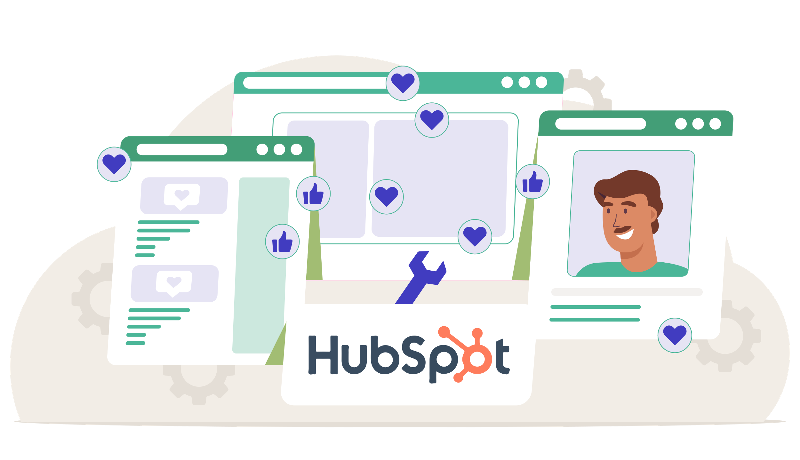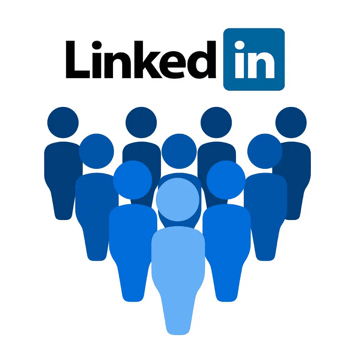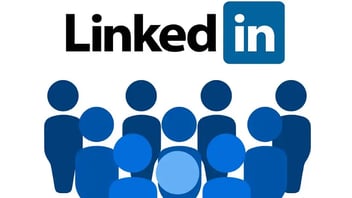Discover how HubSpot Marketing Hub can revolutionize social media marketing. Automate multi-channel postings and leverage AI to maximize engagement.
Make LinkedIn Work for You: Turning Connections into Customers
How to determine what social media platform is best for your marketing efforts is a significant question for any B2B company to ask. Algorithms and focus change over time. What worked last year may or may not be valid today. But one thing has remained consistent: LinkedIn is ascending as a significant player in Social Media for B2B.
Overview
In this article, we've outlined some critical points about LinkedIn and discussed what it is and how it works so you can determine how to make LinkedIn work for you and if it's a good fit for your business. If so, you'll want to spend your time and effort building leads and creating a presence on LinkedIn. So, we've also included tips for creating your profile and establishing your connections. From there, you can set out to convert those connections into customers!
What is LinkedIn?
LinkedIn is no longer just for resumes and job searches. It is a social media platform for business, mainly if you are a B2B company. It is a place where leaders across industries can share content and network. It has become a hub for professionals.
Here are some things about LinkedIn you should know if you consider cultivating your network there.
-
Dominant Demographics: There's a pretty even split between men and women on the platform, centered in the 25 to 45 age group. Arising from the professional nature of the audience, these people have roughly twice the buying power of the average web audience. They are also more likely to trust professionals they find through LinkedIn.
-
Industries Served: From its inception, LinkedIn has been the place for recruiters and businesses seeking to hire, with secondary education and B2B industries having also joined. LinkedIn's advertising is not as complex as other platforms (like Facebook), but it's easier to target specific businesses or jobs because of its professional nature.
-
Business Benefits: People are more likely to take businesses on LinkedIn seriously because it is considered a social media platform for business. If you are a B2B company looking to increase your business connections or want other companies to look for your services, this is your best social media platform. This is also the best place for lead generation and recruiting.
If your goal is to be a thought leader in your niche, this is where you want to be.
LinkedIn's Right For You. Now What?
So you're convinced. You want your company to be on LinkedIn, and you want to generate leads and conversions. Now here's how.
-
Optimize your profile so it gets viewed by more people more often. You need it to do two things for you: 1. get you found by relevant people, and 2. make a compelling case for why they should take you seriously.
-
Complete every section of the profile. LinkedIn will assign a profile strength. They use Beginner, Intermediate, Advanced, Expert, and All-Star. You want to be at least Advanced.
-
Use keywords that describe the skill set you bring to the table. Think about what folks would search for if they needed what you provide. Integrate those search terms across your company's page, being careful not to keyword stuff.
-
Get backlinks to your profile—link to your profile from your blog. When you guest post, be sure there's a link in your author bio. Link from any other social media profiles.
-
Optimize anchor links; you can add up to three websites to your LinkedIn profile.
-
Replace the default URL with one that includes your name.
-
Connect with as many people as possible. First, second, third, and group-level connections are all used to evaluate search results.
-
Name your headshot, background banner, and other images before uploading them. Use your keywords in these names.
Elements That Matter on LinkedIn
Pay careful attention to what you say and how you say it to maximize the number of people who see your information and want to read more about you, engage with you, and eventually do business with you.
-
Headline. You are limited to 120 characters. Consider these questions in composing the most effective headline: Who is your target? What is your value proposition? What is your unique selling point?
You want your language to mirror that of your ideal prospect. You need to distill your value proposition into one short phrase. You need to differentiate yourself from others who might be able to provide a similar solution.
-
Summary. If your headline is your hook, the summary is the sales copy, and you're the product. How will you convince all those prospects to find out more about you? Remember, LinkedIn cuts off your summary after two lines with everything else hidden behind a "read more" button, so lead with the benefits you offer and end with a call to action.
-
History. Focus on accomplishments rather than responsibilities to show how well you did rather than just what you did.
-
Skills. Here is where you show social proof and legitimize your value. Focus on the top 3 skills on your profile. Get endorsements by first endorsing other people. Be sure the skills section of your profile is at the top of the section. Be active on LinkedIn and then ask for endorsements.
-
Recommendations. These carry more weight than endorsements as a form of social proof because it's testimony about a professional relationship.
You Might Also Like This Post:
Build a targeted network.
Define your target by deciding who you want to connect with. You only connect with people in your industry who would make ideal clients or simply anyone.
Connect with your targets using personalized messages and a connection request template. Provide a compelling reason—just a few sentences on why you want to connect.
Connect with people you know, beginning with everyone you've worked with, current colleagues, friends, and family.
Connect with anyone who engages with your profile because that shows they're already engaged...a positive signal! Invite them to connect if you see they've liked or commented on something you've posted or shared.
Connect with ideal targets for strategic and high-quality connections. Look at people you want to build relationships with and invite them to connect with you. Be sure it's a personalized request.
Use LinkedIn groups as an efficient way to make meaningful connections. You can leverage the activity of an existing group or create your group. Find groups by putting an industry keyword in the search bar and selecting groups.
Convert connections to leads.
Escort them through your marketing funnel by offering a webinar, ebook, consultation, or something else of value. You aim to become a trusted and reliable source.
Create content that proves your value to your target audience. Demonstrate your authority in your space with thorough and helpful that could include how-to posts, guides, and case studies. Always have a compelling CTA at the end of each published piece.
Nurture leads and generate sales
You need a system to keep in touch with anyone engaged with your content. You want to get your LinkedIn contacts on your email list to enable you to stay in communication with them. You can engage your LinkedIn leads by directly messaging and interacting with their content.
After you've nurtured a relationship, you can look to convert them into customers. Some people link to sales pages from their LinkedIn profiles. What seems to be a better strategy is to build the relationship and prove your value first.
This content is also available in:
- German: LinkedIn für B2B: Verbindungen effektiv in Kunden umwandeln
- Spanish: Haz que LinkedIn trabaje para ti: Convertir las conexiones en clientes
- French: Convertir les Connexions LinkedIn en Clients Potentiels
- Italian: Fate lavorare LinkedIn per voi: Trasformare le connessioni in clienti
- Romanian: LinkedIn: Transformați conexiunile în clienți
- Chinese: 让 LinkedIn 为您服务:将连接转化为客户











Leave a Comment